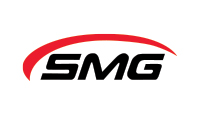February 23, 2015
PRETREATMENT PROGRAM – OBJECTIVES AND DEFINITIONS OF KEY TERMS
POSTED BY
Shri Vani SripadaTAGGED
SHARE
In my previous blog, I explained about the basic definition and need for the Pretreatment. Now, let’s take a look at the objectives and some definitions:
The objectives of the National Pretreatment Program stated in 40 CFR 403.2:
- Prevent the introduction of pollutants into a POTW that will interfere with the operation of the POTW, including interference with its use or disposal of municipal sludge.
- Prevent the introduction of pollutants into POTW that will pass through the treatment works or otherwise be incompatible with such works.
- Improve opportunities to recycle and reclaim municipal and industrial wastewaters and sludges.
I have bolded a couple of terms above in order to emphasize the terms as key terms used in Pretreatment Program:
Interference: A discharge which alone or in conjunction with a discharge or discharges from other sources
- Inhibits or disrupts the POTW, its treatment processes or operations or its sludge processes use or disposal, and
- Therefore is a cause of violation of any NPDES permit requirement or of the prevention of sewage sludge use or disposal in compliance with any applicable requirements.
Pass Through: A discharge that exits the POTW into waters of United States in quantities or concentrations which alone or in conjunction with a discharge or discharges from other sources is a cause of a violation of any NPDES permit requirement.
The NPDES permit program was established under the CWA to control the discharge of pollutants from point sources and served as a vehicle to implement the industrial technology based standards for direct discharges and to implement categorical pretreatment standards for indirect discharges under the POTW pretreatment program.
In my next blog I will talk about more regulations and Pretreatment standards.
If you have any questions, please contact me at shrivani@smithmanage.com
